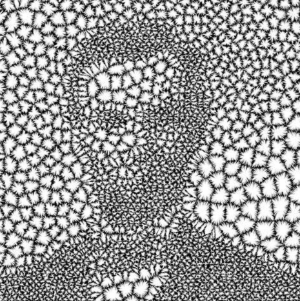Further explorations with Voronoi (AI SL 3.6)
Keywords
| Voronoi diagrams | ボロノイ図 | 보로노이 다이어그램 | 沃罗诺伊图 |
| Partitioning a plane | 平面の分割 | 평면 분할 | 平面分割 |
| Distances | 距離 | 거리 | 距离 |
| Voronoi regions | ボロノイ領域 | 보로노이 영역 | 沃罗诺伊区域 |
| Perpendicular bisectors | 垂直二等分線 | 수직 이등분선 | 垂直平分线 |
| Delaunay triangulation | ドロネー三角測量 | 델로네 삼각분할 | Delaunay三角剖分 |

| Factual Questions | Conceptual Questions | Debatable Questions |
| How are Voronoi regions constructed from a given set of points in a plane? | Why are Voronoi diagrams important for understanding spatial relationships and area partitioning? | Can Voronoi diagrams be considered an effective tool for all types of spatial optimization problems, or are there limitations to their applicability? |
| What geometric properties do the perpendicular bisectors have in relation to Voronoi diagrams? | In what ways can the concept of Voronoi diagrams be used to optimize real-life problems like urban planning or resource distribution? | How might the reliance on Voronoi diagrams in certain fields, like telecommunications, influence the development of infrastructure? |
| How does altering the position of a single point affect the layout of its Voronoi region? | How does the Delaunay triangulation relate to its dual, the Voronoi diagram, in terms of graphical representation? | Is the use of Voronoi diagrams and Delaunay triangulation in computational geometry always the most efficient method for solving problems involving proximity or coverage? |
Voronoi Diagrams
Mini-Investigation: Voronoi Diagrams
Objective:
Explore the construction and applications of Voronoi diagrams, which partition a plane based on distances to a specific set of objects.
Questions:
1. How does the placement of points affect the shape and size of the corresponding Voronoi regions?
2. What happens to the Voronoi diagram when two points are very close together compared to the others?
3. Can you create a situation where a Voronoi region is completely enclosed by another? Try moving the points to achieve this.
4. Investigate the role of the perpendicular bisectors in the creation of Voronoi diagrams. Why are they important?
5. Experiment with adding more points to the diagram. How does the number of points affect the complexity of the Voronoi diagram?
6. Identify a real-life situation where a Voronoi diagram could be useful (e.g., cell phone towers, distribution centers). Discuss how it could be applied.
7. Challenge: Try to create a Voronoi diagram with regions of equal area. Is this possible? What does it tell us about the distribution of points?
8. Explore the concept of the dual graph to the Voronoi diagram, the Delaunay triangulation. Can you infer its properties by looking at the Voronoi diagram?
Activity:
Using the applet, create a Voronoi diagram representing different shops in a city. Discuss which areas would be served by each shop and how the Voronoi diagram helps in planning delivery routes or service areas.